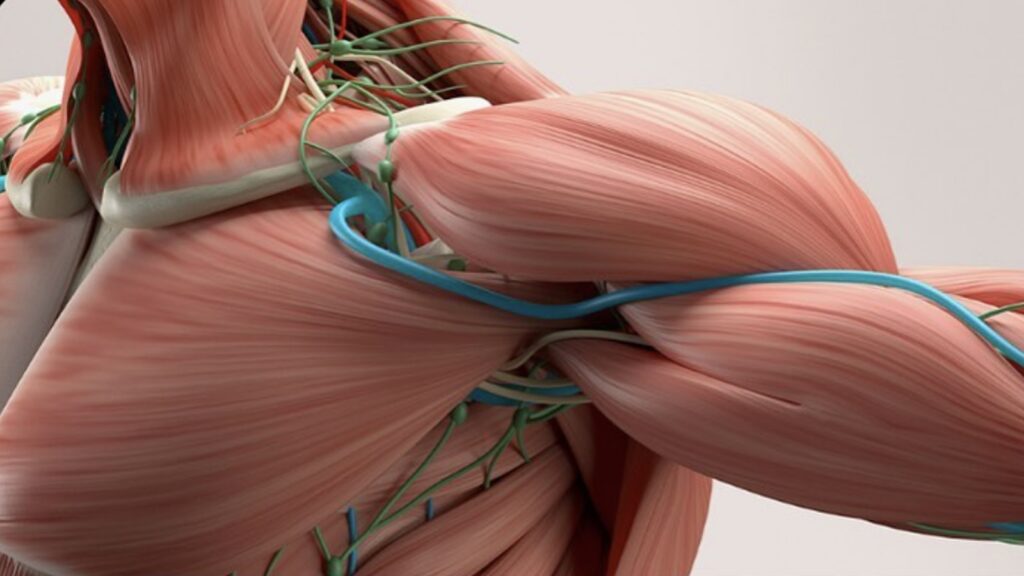Begin early to leverage muscle reminiscence and maximize your features.
Muscle reminiscence is greater than only a buzzword. Understanding its actual mechanisms can revolutionize your coaching method to optimize features, thereby permitting you to attain your physique targets sooner.
On Oct. 4, 2024, Dr. Milo Wolf, Ph.D. in Sports activities Science, and Dr. Kevin Murach, Ph.D. in Human Bioenergetics, defined the science behind muscle reminiscence and its implications for well being, health, and athletic efficiency.
Key Takeaways
- There are two particular varieties of muscle reminiscence:
- One is expounded to the nervous system and motor studying.
- One is expounded to muscle physiology.
- After detraining, muscle mass will be rebuilt sooner than it took to initially acquire them.
- Muscle cell nuclei play a significant function in muscle development and reminiscence.
- Myonuclei addition and epigenetic modifications are the main theories behind muscle reminiscence.
- Exercising early in life can have lasting impacts on muscle well being and the power to regain muscle even after lengthy intervals of inactivity.
- Muscle reminiscence might help athletes recuperate muscle mass and power rapidly after damage breaks.
Wolf outlines the 2 major definitions of muscle reminiscence. The primary pertains to the nervous system’s means to retain motor expertise, like riding a bike, even after lengthy intervals of inactivity.
The second definition, and the main focus of Wolf’s dialogue, includes muscle physiology. It issues the muscle’s capability to rebound rapidly after a break in training, regaining measurement and power sooner than it took to construct them initially.
Wolf cites a number of research the place, following a interval of detraining, individuals regained misplaced muscle and power considerably sooner — in some circumstances, as much as 4 occasions sooner — than throughout their preliminary coaching. This speedy restoration is muscle reminiscence in motion. (1)(2)(3)
Notably, a couple of research recommend that muscle reminiscence solely works for skilled athletes and that its full potential may not be realized inside a brief timeframe (e.g., 10 weeks).
Why Does Muscle Reminiscence Exist?
Muscle reminiscence hinges on myonuclei, the ‘management facilities’ inside muscle fibers. Murach explains that myonuclei are essential for muscle development, performing as blueprints for protein synthesis.
Wolf presents two main theories — the myonuclei addition principle and the myonuclear epigenetic modification principle. The previous means that coaching provides new cell nuclei to muscle fibers, which persist even after detraining, enabling sooner regrowth. The latter proposes that coaching alters the expression of genes inside present nuclei, optimizing them for future muscle development.
Murach acknowledges that these theories’ actual mechanisms and relative contributions are nonetheless below investigation. He means that myonuclei addition could drive short-term muscle reminiscence, whereas epigenetic modifications might dominate long-term variations.
Sensible Implications of Muscle Reminiscence
Murach underlines the lifelong advantages of exercising earlier in life, emphasizing that it enhances muscle well being and the capability to regain misplaced muscle later in life, even after extended inactivity. This, he argues, contributes considerably to preserving independence and high quality of life in outdated age.
Muscle reminiscence presents a silver lining for athletes sidelined by damage. Wolf highlights that any muscle and power misplaced throughout these intervals will be recouped at an accelerated price, minimizing the interruption’s impression on athletic efficiency.
Extra Coaching Content material
References
- Ogasawara, R., Yasuda, T., Sakamaki, M., Ozaki, H., & Abe, T. (2011). Results of periodic and continued resistance coaching on muscle CSA and power in beforehand untrained males. Medical physiology and purposeful imaging, 31(5), 399–404. https://doi.org/10.1111/j.1475-097X.2011.01031.x
- Ogasawara, R., Yasuda, T., Ishii, N., & Abe, T. (2013). Comparability of muscle hypertrophy following 6 months of steady and periodic power coaching. European journal of utilized physiology, 113(4), 975–985. https://doi.org/10.1007/s00421-012-2511-9
- Staron, R. S., Leonardi, M. J., Karapondo, D. L., Malicky, E. S., Falkel, J. E., Hagerman, F. C., & Hikida, R. S. (1991). Power and skeletal muscle variations in heavy-resistance-trained girls after detraining and retraining. Journal of Utilized Physiology (Bethesda, Md.: 1985), 70(2), 631–640. https://doi.org/10.1152/jappl.1991.70.2.631
Featured picture: @kevinmurachphd on Instagram
